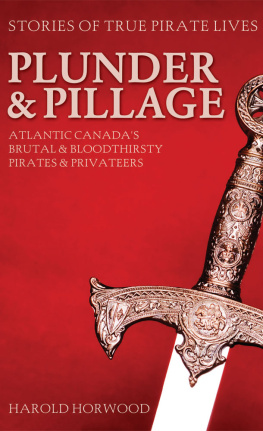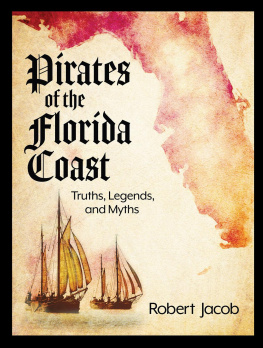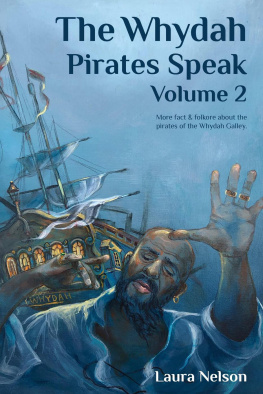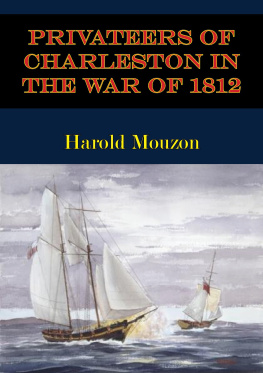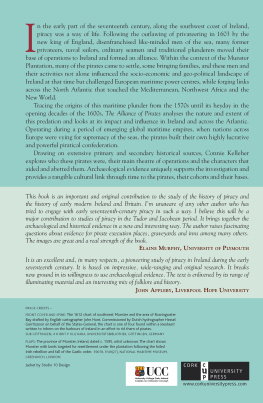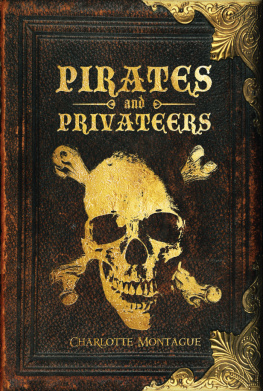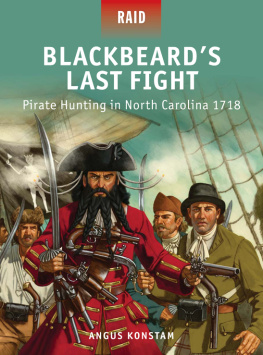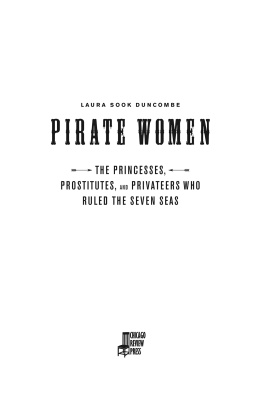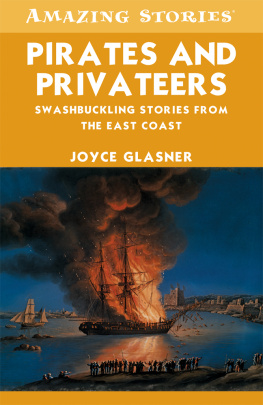THE AUTHOR WOULD like to thank the following institutions: the Public Archives of Newfoundland, Nova Scotia, Prince Edward Island, the Public Archives of Massachusetts; the Public Archives and National Library of Canada; the British Public Records Office; the Gosling Memorial Library, St. Johns; the Conception Bay Museum, Harbour Grace; the Maritime Museum, Boston; the New Brunswick Museum; the Newfoundland Historical Society; Department of the Navy, Naval Historical Centre, Washington D.C.; Library of Congress, Washington D.C. A special note of thanks to Mr. Dwight Girty.
INTRODUCTION
PIRACY IS OLDER THAN HISTORY. The ships of Ancient Egypt had to defend themselves against sea rovers; pirates seized the young Julius Caesar and held him for ransom. They played a major role perhaps the decisive one in bringing to an end the great Norse venture to Greenland and America in the five centuries before Columbus. The Greenland colonies, founded so long before by Eric the Red, were repeatedly sacked early in the fifteenth century by English and Scottish pirates who carried off Greenlanders to be sold as slaves in the Muslim lands of North Africa.
The great age of piracy in the Atlantic coincided with the colonizing of the New World by Europeans. The Spanish colonies, in particular, were little more than centres for the gathering of loot from older and richer civilizations such as those of the Incas and the Aztecs. Since this loot had to be convoyed across the Atlantic to Spain, and since the English, French, and Dutch had by that time learned to build ships that were faster, nimbler, and better armed than anything owned by the Spaniards, the Spanish treasure ships offered a tempting and easy target for pirates and privateers from northwestern Europe.
The distinction between a pirate and a privateer was simply that the privateer sailed with the blessing of his government to capture enemy ships, either in wartime or in a part of the world that his government regarded as no-mans land, while the pirate sailed under no greater authority than that of his own guns. The privateer carried letters of marque authorizing him to prey on the ships of certain nations. England, in the sixteenth and seventeenth centuries, made the curious distinction that even when she was at peace with Spain she might still be at war with the Spanish colonies in the New World. After all, the Spaniards were in the Caribbean by authority of the Pope, and the Pope, in newly Protestant England, had no authority. So the reasoning went an excuse for allowing Drake, Hawkins, and their successors to prey on Spanish ships and Spanish colonies even when Spain and England were not at war.
It is interesting to question just who should and who should not be classified as a pirate. Francis Drake, the arch-pirate El Draco of Spanish history, plundered the Spanish colonies of the New World with a privateering commission issued by the great Queen Elizabeth of England and was rewarded with a knighthood. In Spain, El Draco is remembered as the most vicious pirate in history the Ghengis Khan of the freebooters; in England he is remembered as Sir Francis Drake, the greatest hero of the Elizabethan Age. Sometimes the distinction was so fine that a privateer might stray into piracy almost by accident. This seems to be what happened to Captain William Kidd, who began life as a respectable naval officer, commanded the most splendid privateer of his time with a commission from Great Britain to police the Indian Ocean, but ended his life on the gallows as a pirate in 1701. There is still a lively debate among historians as to whether Captain Kidd was ever guilty of piracy at all. Though the distinction should have been simple, it wasnt always so, and it was sometimes a question of what you could get away with. If you succeeded, all might be forgiven. If you failed, you might be hanged, drawn and quartered, or broken on the wheel.
This book follows the fortunes of several such characters who preyed upon the shipping and coast of Atlantic Canada from the seventeenth to the nineteenth century. The story starts in 1611 with the arch-pirate Peter Easton, a folk hero in Newfoundland, and ends in 1865 with Mogul Mackenzie, a privateer who seems to have turned to piracy, and who disappeared without a trace in the Bay of Fundy. In between are the stories of an assortment of pirates and privateers, some of whom fall into both camps.
Hard on the heels of the Spanish thrust into Central America came the English, French, and Portuguese fisheries in Newfoundland and Nova Scotia. The fisheries quickly mushroomed into an immense industry, employing hundreds of ships and tens of thousands of men and women in a land with no government closer than Europe and no authority higher than that of the fishing admirals the first captain to arrive at a port in the spring became admiral of that port for the year. So Newfoundland became the very nest from which pirates were hatched. The pirate captains set up forts, careenages, and docks; they recruited shipwrights, sailmakers, iron-workers, and deckhands by the thousands; then they sailed south, well equipped to deal with the merchant ships of all nations, including their own.
Although the taking of the Spanish treasure ship was the grand slam of piracy, other smaller victories were welcomed French cargoes of wine, English cargoes of shore-cured fish, and, a little later, cargoes of furs from Hudson Bay and the St. Lawrence River. The dukedoms of southern France ran a massive black market. One could sell anything, including captured ships, in the French free ports. One could do almost as well, with no greater risk, in Ireland and western England, where robber barons commanded armed castles only loosely attached to the English Crown. These barons became the great outfitters and protectors of the English pirates, investing in pirate voyages without risk to themselves and having the means to dispose of whatever cargoes the pirates brought home.
The glittering reward, the great hope that lured men into piracy, was wealth, with its attendant power and ease. In the seventeenth century, when the story of piracy in Canada begins, the annual wage for a working man ranged from five to ten pounds sterling. But the payoff at the end of a pirate voyage was often a thousand pounds or more enough to buy an estate or, prudently invested, to support ones family in comfort for life. A common pirate might rise from deckhand (scum, as their officers called them) to country squire. A pirate captain might rise much higher. Three of the Newfoundland pirates bought their way into the European nobility.
Piracy was a much more complex trade than mere brigandage. To practise it successfully one needed a ship, preferably well armed, a navigator, and a large crew. Pirates captured their prizes, as a rule, by sheer weight of numbers. A merchant crew facing a boarding party that might outnumber them ten to one had little choice but to surrender. If they surrendered without a fight, their lives would usually be spared. Often they would have the choice of joining the pirates or sailing away naked in an empty ship.
The pirates depended upon constant recruitment, often at sea. Bristol, in the seventeenth and eighteenth centuries, was the world capital of both piracy and the slave trade, a port that eclipsed even London in the volume of its commerce. But even there a pirate captain could not boldly recruit a crew of a hundred fighting men and clear for the high seas. Rather, he left on a peaceful trading or fishing voyage and then went on the account. This phrase, meaning turned pirate, was derived from going off on your own account, in other words, working for yourself instead of for a shipowner.

